Loading
Journal of Clinical Cardiology
ISSN: 2694-5088
All Articles
Left Atrial Dysfunction in Patients with Coronary Slow Flow
Li Liu, Jing Dong, Zhiyuan Shui
In this review address the changes of LA structure and function in patients with CSFP according to our research and existing literature, therefore provide further insight into its clinical significance and pathophysiological mechanisms.
J Clin Cardiol, 2021, Volume Volume 2, Issue Issue 4 | DOI: 10.33696/cardiology.2.021
Hypertrophic Cardiomyopathy and the Troponins: The Enigma Remains
Rameen Shakur
Hypertrophic cardiomyopathy (HCM) is a heart muscle disorder and is the most common form of Mendelianinherited heart disease, affecting approximately 0.2% of the global population. In adults the disease is often inherited as an autosomal dominant trait caused by mutations, mainly in one of the 23 cardiac sarcomere protein genes.
J Clin Cardiol, 2021, Volume Volume 2, Issue Issue 1, p1-5 | DOI: 10.33696/cardiology.2.006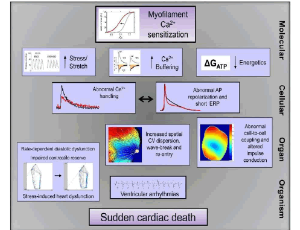
In-Stent Restenosis: Achilles’ Heel of Post-PCI Era
Sheng-Nan Zhou, Le Yang, Bi-Yang Feng, Lei Liu, Li-Ming Chen
Despite advancements in stent design and polymer coatings over the past two decades, 1% to 2% of patients annually still experience instent restenosis (ISR). ISR reduces myocardial perfusion, may develop symptoms of myocardial ischemia, and thus leads to a high risk of myocardial infarction and cardiac death. Given that millions of drug-eluting stents (DES) are implanted globally every year, ISR remains a prevalent clinical issue with significant public health implications.
J Clin Cardiol, 2024, Volume Volume 5, Issue Issue 1, p1-5 | DOI: 10.33696/cardiology.5.047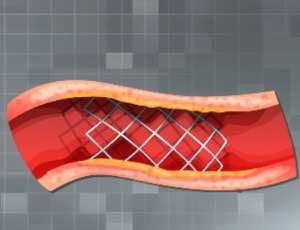
The Fatal Interplay between Stress Induced Cardiomyopathy, Arrhythmia and Cardiogenic Shock
Mariam Khabsa, Bilal Al Kalaji, Sumaya Rasheed, Farah Zahra, Alok Patel
A 59-year-old man presents to the hospital following a syncopal episode after a low-speed car accident without visible injuries. He was diagnosed with stress cardiomyopathy and severe triple-vessel coronary artery disease. The case was complicated by complete heart block that culminated in refractory cardiogenic shock. Literature and current approach are reviewed.
J Clin Cardiol, 2023, Volume Volume 4, Issue Issue 1, p1-6 | DOI: 10.33696/cardiology.4.037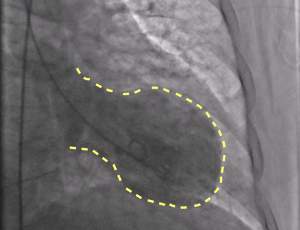
Coronary Artery Disease in Athletes-Insights from Cardiac CT
Muneeb Khan, Keishi Ichikawa, Srikanth Krishnan, Matthew J. Budoff
Exercise is widely recognized for its cardiovascular benefits, including reduced mortality and a lower risk of cardiovascular events. However, recent studies suggest that athletes may exhibit a paradoxical increase in coronary artery calcium (CAC) and high-risk plaque morphology. Additionally, there is considerable conflicting evidence and numerous gaps in current research on this topic. With the growing population of athletes, particularly “Master Athletes’, understanding the implications of coronary atherosclerosis in this group is increasingly important.
J Clin Cardiol, 2025, Volume Volume 6, Issue Issue 1, p1-8 | DOI: 10.33696/cardiology.6.064
Late ECG Changes after Cisplatin-Based Chemotherapy in Testicular Cancer Survivors
Ljuba Bacharova, Andreas Thaler, Lucia Petrikova, Beata Mladosievicova, Daniela Svetlovska, Katarina Kalavska, Zora Krivosikova, Jozef Mardiak, Michal Mego, Michal Chovanec
Introducing cisplatin-based therapy into testicular cancer treatment represents a substantial progress in therapy leading to a longer survival of patients and less adverse effects; currently it represents the standard therapy.
J Clin Cardiol, 2022, Volume Volume 3, Issue Issue 1, p1-11 | DOI: 10.33696/cardiology.3.027
Chest Pain in Repeated Emergency Department Visitors
Ksenija Slankamenac, Michael Stucki, Dagmar I. Keller
Chest pain is the leading symptom in 5 to 8% of all emergency department (ED) visits and is also one of the major reasons of repeated ED visits, causing around 6% of these cases [1]. Generally, in 15 to 25% of patients with chest pain, acute myocardial infarction (AMI) is the underlying cause.
J Clin Cardiol, 2020, Volume Volume 1, Issue Issue 1, p1-15 | DOI: 10.33696/cardiology.1.001
Body Mass Index and Treatment Response in Patients with Cardiac Light-Chain Amyloidosis
So Yeon Kim, Raymond Comenzo, Amanda R. Vest, Nauman Saleem Siddiqui, Cindy Varga
Elevated body mass index (BMI) has been associated with an increased risk of cancer and has been shown to have a negative impact on survival in patients with breast, prostate, oral cancer, and leukemia. In plasma cell dyscrasias, obesity has not only been shown to be a risk factor for the development of multiple myeloma, but also has been associated with a higher rate of progression from monoclonal gammopathy of unknown significance (MGUS) to multiple myeloma, and if intervened on, has bee
J Clin Cardiol, 2021, Volume Volume 2, Issue Issue 1, p6-10 | DOI: 10.33696/cardiology.2.007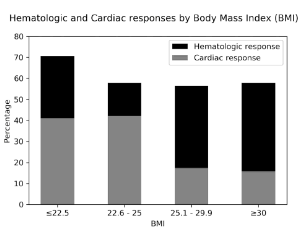
Shaping the Future of Cardiac Wellness: Exploring Revolutionary Approaches in Disease Management and Prevention
Tamer A. Addissouky, Ibrahim El Tantawy El Sayed, Majeed M. A. Ali, Yuliang Wang, Ayman El Baz, Naglaa Elarabany, Ahmed A. Khalil
Cardiovascular diseases (CVDs) remain a leading cause of morbidity and mortality worldwide. Effective prevention and management strategies are essential to reduce the burden of CVDs. This review summarizes recent advances in the prevention and management of CVDs. In terms of prevention, lifestyle modifications, such as diet, exercise, and smoking cessation, remain important strategies.
J Clin Cardiol, 2024, Volume Volume 5, Issue Issue 1, p6-29 | DOI: 10.33696/cardiology.5.048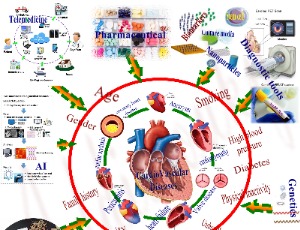
Ischemic Cardiomyopathy Evaluation with Coronary Calcium Score and CT Angiogram
Agara Kumar, Nebat Hussen, Suvasini Lakshmanan, Venkat Manubolu, April Kinninger, Matthew J. Budoff, Sion K. Roy
Our study aimed to examine the prevalence of atherosclerotic burden in a predominantly non-white cohort of patients from LA County who underwent coronary artery calcium scoring (CACS) and coronary CT angiogram (CCTA) for the evaluation of cardiomyopathy of ischemic origin. Ischemic cardiomyopathy, primarily caused by reduced blood supply to the heart, is the most common type of cardiomyopathy.
J Clin Cardiol, 2023, Volume Volume 4, Issue Issue 1, p7-13 | DOI: 10.33696/cardiology.4.038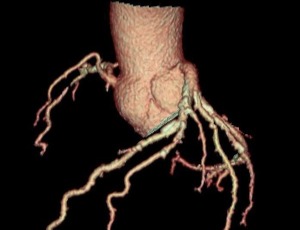
Echocardiographic Predictors of Atrial Fibrillation after Coronary Artery Bypass Grafting: A Speckle Tracking Echocardiography Study
Bassam S Hennawy, Karim Mounir Kamel, Ahmed Mohammed Onsy, Ahmed Mohammed Abd-Elsalam
The most prevalent major arrhythmia, atrial fibrillation (AF), is causing major morbidity and mortality throughout any population. AF patients have longer hospital admissions, a higher risk of death, and worse outcomes than stroke patients without AF. Chronic AF makes a stroke more likely. Moreover, it may result in additional serious side effects such as hemodynamic disturbance, heart failure, and even death.
J Clin Cardiol, 2025, Volume Volume 6, Issue Issue 1, p9-17 | DOI: 10.33696/cardiology.6.065
Mono- and Multi-nucleated Cardiomyocytes Do Not Constitute Transcriptionally Distinct Entities
Michail Yekelchyk, Thomas Braun
The last years have witnessed an increased interest in the genetic, epigenetic and transcriptional heterogeneity of mammalian hearts under basal and disease conditions. Although it is known for a long time that the heart consists of several, functionally different cell populations, more detailed insights into the potential heterogeneity of individual cell populations, such as cardiomyocytes, endothelial cells or fibroblasts were hindered by the lack of appropriate techniques.
J Clin Cardiol, 2021, Volume Volume 2, Issue Issue 1, p11-14 | DOI: 10.33696/cardiology.2.008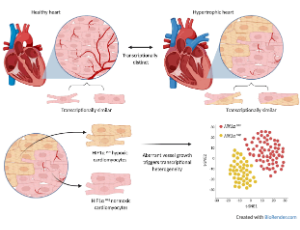
The Novel Antiplatelet Agent Revacept in Cardiovascular Medicine: The Promise of Efficacy Without Bleeding
Annalisa Contursi, Patrizia Ballerini, Sara Alberti, Götz Münch, Paola Patrignani
Revacept, a dimeric fusion protein of the extracellular domain of GPVI and the human Fc-fragment, inhibits collagen-mediated platelet adhesion and subsequent aggregation at the site of vascular injury. Finally, the possible utility of this pharmacological approach in the prevention of tumor metastasis is discussed.
J Clin Cardiol, 2022, Volume Volume 3, Issue Issue 1, p12-20 | DOI: 10.33696/cardiology.3.028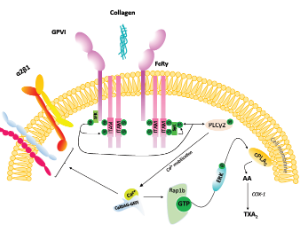
When the Right Coronary Artery is Tortuous and Too Big for Standard Coronary Stents: “The Child-in Mother Carotid Stent Technique”
Giulio Piedimonte, Enrico Cerrato, Greca Zanda, Cristina Rolfo, Francesco Tomassini, Alfonso Franzè, Marco Pavani, Rosario Tripodi, Ferdinando Varbella
Routine implementation of guide extension catheters in percutaneous coronary intervention (PCI) has significantly increased success rates in challenging anatomies, such as in tortuous and severe calcified vessels. Recently, the “Child-In-Mother technique” has been tested successfully in carotid artery stenting (CAS) in patients with severe tortuosity of the common or internal carotid artery (ICA).
J Clin Cardiol, 2023, Volume Volume 4, Issue Issue 1, p12-20 | DOI: 10.33696/cardiology.4.040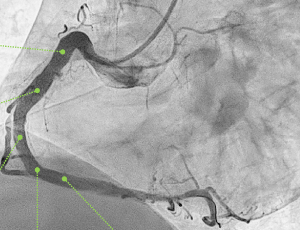
Association between Leukocyte Telomere Length and Atrial Fibrillation: A Mendelian Randomization Study
Jingmeng Liu, Jun Chen
Atrial fibrillation (AF) is the most common cardiac arrhythmia worldwide. The prevalence of AF increases significantly associated with increasing age, ranging from less than 0.5% of the population younger than 40 to 5% of those aged 65 and older and more than 10% of those surviving to the eighth decade of life. Therefore, AF is thought to be closely related to biological ageing.
J Clin Cardiol, 2023, Volume Volume 4, Issue Issue 1, p14-18 | DOI: 10.33696/cardiology.4.039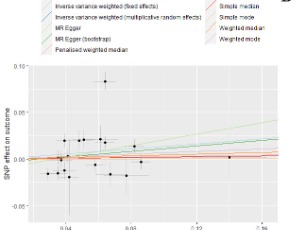
Commentary on: Structural Basis of the Activation of Heterotrimeric Gs-Protein by Isoproterenol-Bound Beta 1- Adrenergic Receptor
Liang Jing, Lan Zhu, Wei Liu
G protein coupled receptors (GPCRs) comprise a large superfamily of transmembrane proteins containing more than 800 unique family members. Critically, GPCRs mediate most of the cell responses to extracellular stimuli including hormones, neurotransmitters, light, taste, etc.
J Clin Cardiol, 2021, Volume Volume 2, Issue Issue 1, p15-18 | DOI: 10.33696/cardiology.2.009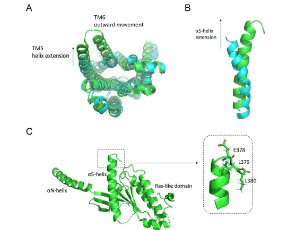
Lipoprotein Apheresis: First FDA Indicated Treatment for Elevated Lipoprotein(a)
Anne K. Nugent, Jessica V. Gray, Lauryn K. Gorby, Patrick M. Moriarty
Lipoprotein(a) [Lp(a)] is a genetically determined lowdensity lipoprotein (LDL) particle that is comprised of apolipoprotein(a) [apo(a)] and apolipoprotein B-100 (apoB) moieties. It is well-established that elevated Lp(a) is an independent risk factor for cardiovascular disease (CVD).
J Clin Cardiol, 2020, Volume Volume 1, Issue Issue 1, p16-21 | DOI: 10.33696/cardiology.1.002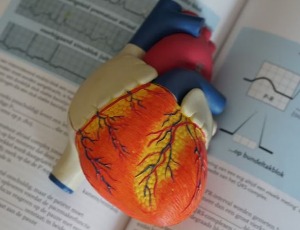
Cholesterol Paradox: Understanding and Implications for Clinical Practice and Education
Rodney G. Bowden, Tanvir Ahmed
Cholesterol has long been recognized as a major risk factor for cardiovascular diseases with traditional guidelines emphasizing the reduction of LDL cholesterol and triglycerides, and the increase of HDL cholesterol to lower morbidity and mortality. However, recent studies have questioned the predictive value of these traditional cholesterol measures in coronary artery disease. The concept of the cholesterol paradox has emerged, highlighting instances where elevated LDL cholesterol or high HDL levels have an inverse relationship with cardiovascular risk, particularly in certain diseased populations.
J Clin Cardiol, 2025, Volume Volume 6, Issue Issue 1, p18-22 | DOI: 10.33696/cardiology.6.066
Predicting COVID-19 Hospitalized Patients’ Outcome with Homocysteine
Giovanni Ponti, Marco Manfredini, Gabriella Oliva, Tomris Ozben, Caterina Fontana, Aldo Tomasi
The COVID-19 pandemic has provoked a global, rapid increase of cases due to the high infectivity of the etiological agent, COVID-19 virus. In February 2021, over 110 million confirmed COVID-19 cases with 1 million deaths were reported worldwide (www.who.int).
J Clin Cardiol, 2021, Volume Volume 2, Issue Issue 1, p19-22 | DOI: 10.33696/cardiology.2.010
Should we Target Myostatin, PCSK9 or Their Combination in Ischemia or Reperfusion Injury?
Chiara Barisione, Domenico Palombo
Ischemia/reperfusion (I/R) injury is the consequence of a transient interruption of the blood supply for pathologic, traumatic or surgical reasons, followed by flow restoration with rapid hemodynamic changes in the downstream tissues and organs.
J Clin Cardiol, 2022, Volume Volume 3, Issue Issue 1, p21-24 | DOI: 10.33696/cardiology.3.029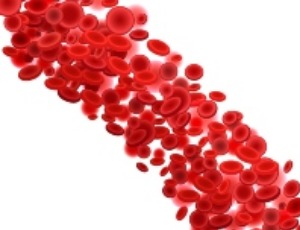
Paradoxical Low Flow Aortic Stenosis: A Clinical Dilemma
Adriana Rosario, Sofia Carolina Masri
Internists as well as cardiologists often receive echocardiogram reports which failed to offer a clear definition of the aortic stenosis (AS) severity due to discordant data regarding the aortic valve gradients and the valve area. Sometimes AS appears severe according to the valve area criteria, in spite of the fact that gradients across the valve are not in the severe range.
J Clin Cardiol, 2020, Volume Volume 1, Issue Issue 1, p22-32 | DOI: 10.33696/cardiology.1.003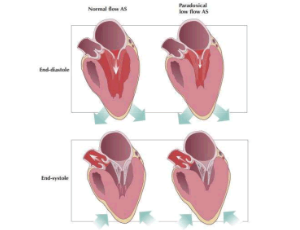
Beneficial Effects of Surgical Closure of Atrial Septal Defect Outweigh Potential Complications in Sick Infants
Takeshi Tsuda, Abdul M. Bhat
Atrial septal defect (ASD) is a common congenital heart disease diagnosed during childhood. Persistently increased pulmonary blood flow and dilated right atrium (RA) and right ventricle (RV) result in multiple symptoms and morbidities in adulthood; untreated adults may develop exercise intolerance, congestive heart failure, atrial tachyarrhythmias, pulmonary hypertension (PH), embolic stroke, or even death.
J Clin Cardiol, 2021, Volume Volume 2, Issue Issue 2, p23-26 | DOI: 10.33696/cardiology.2.011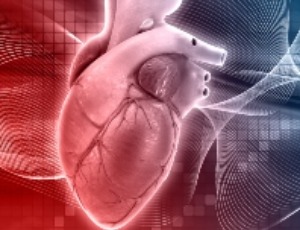
Guidelines Oriented Approach to Lipid (GOAL) Lowering Quality Improvement International Program
Anatoly Langer, Mary Tan, Caroline Spindler, Otavio Berwanger, Diane Camara, Khalid Al Faraidy, Mousa Akbar, Wael Almahmeed, Marco Alcocer-Gamba
Background: Despite practice guidelines, strategies for lowering LDL-C are often poorly adopted in clinical practice. Materials and Methods: Five countries (Brazil, Kuwait, Mexico, Saudi Arabia, and UAE) enrolled 2,422 patients with atherosclerotic cardiovascular disease (ASCVD) or familial hypercholesterolemia (FH) with low density lipoprotein cholesterol level (LDL-C) above 1.4 mmol/L. Patients were followed at 6 ± 2 months intervals to assess LDL-C level and treatment with ezetimibe and/or proprotein convertase subtilisin/kexin type 9 inhibitor (PCSK9i).
J Clin Cardiol, 2023, Volume Volume 4, Issue Issue 1, p23-28 | DOI: 10.33696/cardiology.4.041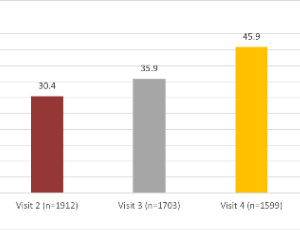
The Diagnostic Accuracy of Ankle Brachial Index in Relation to Coronary Computed Tomography in Coronary Artery Disease
Shereen Mostafa Ahmed, Ossama Sanad Arafa, Mohamed Abdelmoaty Emam Nasr, Mohamed Abdelshafy Tabl
Arterial stiffness and loss of recoil indicate arterial aging and arteriosclerosis, which heighten the risk of cardiovascular issues, particularly ischemic heart disease. Advances in technology, particularly coronary computed tomography angiography (CCTA), allow for accurate detection of coronary luminal stenosis with high image quality. Due to its noninvasive nature and high specificity and negative predictive value, CCTA is widely utilized for assessing coronary artery disease (CAD). It also facilitates the analysis of plaque characteristics and calcium levels in the coronary arteries, providing further insights into coronary risk.
J Clin Cardiol, 2025, Volume Volume 6, Issue Issue 1, p23-32 | DOI: 10.33696/cardiology.6.067
COVID-19 Delays Presentation and Management of Acute Coronary Syndrome
Michael Y. Henein, Matteo Cameli, Maria Concetta Pastore, Giulia Elena Mandoli
The COVID-19 pandemic started at the end of 2019 and remains carrying a health threat and significant economic consequences. Over the last two years, COVID-19 has been the main Public Health issue, and has impacted regular healthcare systems, with significant build-up of waiting lists and delay in optimum management of other serious medical conditions including heart diseases and cancer.
J Clin Cardiol, 2022, Volume Volume 3, Issue Issue 1, p25-28 | DOI: 10.33696/cardiology.3.030
Cardiac Stem Cell Therapy, Quo Vadis
Daniel Alexander Hescheler, Hescheler Jürgen
Cardiovascular disease causes 30% of global mortality and is still the number one cause of death worldwide. A main patho-physiological process is the coronary disease leading to malperfusion and ischemic cardiac disease as well as cardiac infarction.
J Clin Cardiol, 2021, Volume Volume 2, Issue Issue 2, p27-29 | DOI: 10.33696/cardiology.2.012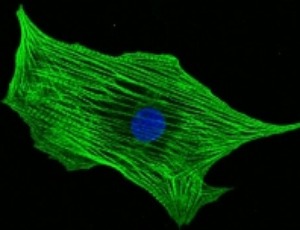
Commentary on: Echocardiography in Pulmonary Arterial Hypertension: Is It Time to Reconsider Its Prognostic Utility?
Eftychia Demerouti, Dimitrios Tsiapras
Pulmonary Arterial Hypertension (PAH) represents a rare but devastating disease due to small pulmonary arterial vessels remodelling and increased pulmonary vascular resistance leading to right ventricular dysfunction, right heart failure and death.
J Clin Cardiol, 2022, Volume Volume 3, Issue Issue 1, p29-34 | DOI: 10.33696/cardiology.3.031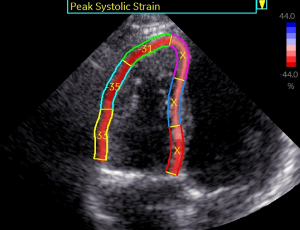
Improve Survival of Out of Hospital Cardiac Arrest with Video-directed Chest Compressions
Annabelle Shen, Alexander Shen
Background: Cardiovascular disease has been the leading cause of mortality worldwide for the past century, but advancements in health intervention have led to a decline of over 20%. However, the Out of Hospital Cardiac Arrest (OHCA) mortality rate remains unacceptably high, exceeding 90% over the past few decades. The primary reasons are the lack of cardiopulmonary resuscitation (CPR) knowledge and delayed medical response [1].
J Clin Cardiol, 2023, Volume Volume 4, Issue Issue 2, p29-35 | DOI: 10.33696/cardiology.4.042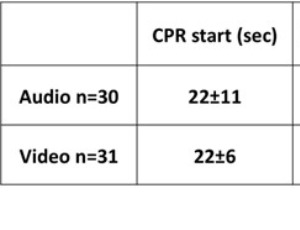
Intermittent Pre-Syncope after Surgical Correction of Aortic Stenosis Caused by Left Ventricular Outflow Obstruction by Elongated Mitral Leaflets
Alys Davies, Michael Y. Henein
Left ventricular outflow obstruction (LVOTO) is a potential complication following surgical replacement of the aortic valve. We present an 88-year-old man who experienced periodic episodes of pre-syncope following aortic valve replacement. The underlying cause was identified as LVOTO resulting from elongated mitral valve leaflets. The diagnosis was established using stress echocardiography, which detected transient LVOTO with moderate rise in heart rate.
J Clin Cardiol, 2024, Volume Volume 5, Issue Issue 1, p30-32 | DOI: 10.33696/cardiology.5.049
Percutaneous Treatment of Mitral Valve Regurgitation: An Evolving Field
Alessandra Sala, Ottavio Alfieri
In the past two decades great interest has developed for less-invasive, percutaneous mitral valve (MV) repair strategies. This is mainly due to the increasing number of elderly patients with comorbidities and/or patients with left ventricular (LV) dysfunction, that are associated with a high surgical risk.
J Clin Cardiol, 2021, Volume Volume 2, Issue Issue 2, p30-33 | DOI: 10.33696/cardiology.2.013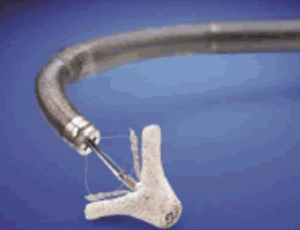
Semaglutide-inducing Non-arteritic Anterior Ischemic Optic Neuropathy and Ipsilateral Blindness -A Rare Presentation
Boran Mao, Sankalp Goberdhan, Usman Mumtaz, Sara Tahir, Sayed T Hussain
Non-arteritic anterior ischemic optic neuropathy (NAION) is the most common cause of optic nerve edema and neuropathy, involving the axons that make up the optic nerve but not including the optic nerve head (also known as posterior ischemic optic neuropathy). Anterior ischemic optic neuropathy can be further divided into arteritic (giant cell arteritis) and non-arteritic subtypes. The pathophysiology of NAION remains unclear and is currently thought to result from impaired blood flow in the posterior ciliary arteries that supply these segments of the optic nerve.
J Clin Cardiol, 2025, Volume Volume 6, Issue Issue 1, p33-36 | DOI: 10.33696/cardiology.6.068
Acute Success and Long-term Follow-up of Catheter Ablation of Isthmus-dependent Atrial Flutter; A Comparison of 10 mm Tip Standard, 6 mm Tip Irrigated Radiofrequency, and Cryotherapy Catheters
Kaoru Okishige, Mitsumi Yamashita, Tomofumi Nakamura, Yasuteru Yamauchi, Tetsuo Sasano, Kenzo Hirao
Various catheter ablation technologies have evolved to improve the procedural success and safety of cavotricuspid isthmus (CTI) block. Numerous studies have compared the different energy types, catheter tip sizes, and energy settings.
J Clin Cardiol, 2020, Volume Volume 1, Issue Issue 1, p33-39 | DOI: 10.33696/cardiology.1.004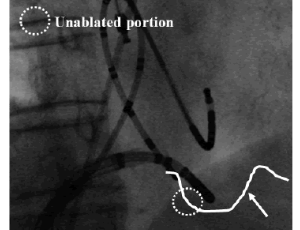
Thrombosis Attack in a Cancer Patient: A Case Report
Azin Alizadeasl, Somaye Ahmadi, Kamran Roudini, Ronak Ahmadi, Haniyeh Hajiali
Background: Cancer is the second leading cause of mortality after cardiovascular disease. The second common leading cause of mortality in cancer patients is thrombosis, vary from arterial or venous thromboembolism to disseminated intravascular coagulation.
J Clin Cardiol, 2024, Volume Volume 5, Issue Issue 1, p33-39 | DOI: 10.33696/cardiology.5.050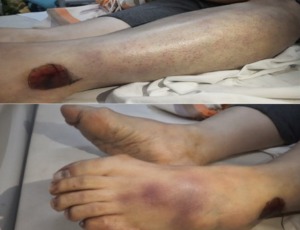
Blood Pressure Lowering May Decrease Cognitive Decline; But Are We Ready to Lower Blood Pressure in the Real World?
Madhuri Ramakrishnan, Gary Gronseth, Aditi Gupta
Dementia and hypertension are highly prevalent, epidemiologically related chronic conditions disproportionately affecting older persons; approximately 97% of persons with dementia and 66% with hypertension are over the age of 65.
J Clin Cardiol, 2021, Volume Volume 2, Issue Issue 2, p34-38 | DOI: 10.33696/cardiology.2.014
Prognosis of Patients with Advanced Liver Disease and Positive Stress Echocardiograms: Impact of Coronary Artery Disease, Non-alcoholic Steatohepatitis, and Beta-blocker Therapy
Kutaiba Nazif, Ronald Mastouri, Joseph Zenisek, Deborah Green-Hess, Marwan Ghabril, Harvey Feigenbaum, Stephen G Sawada
Cardiac Complications are the leading cause of mortality after orthotopic liver transplantation. Advanced liver disease patients with positive DSE are at increased risk. CAD, beta blocker use and NASH are independently associated with cardiac events.
J Clin Cardiol, 2022, Volume Volume 3, Issue Issue 2, p35-42 | DOI: 10.33696/cardiology.2.032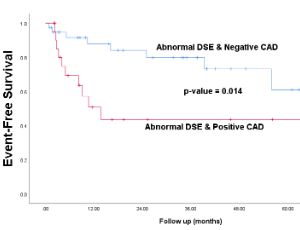
The Use of CHA2DS2-VASc Score to Predict Functional Outcomes of Mechanical Thrombectomy
James Livesay, Benjamin Fogelson, Shawna Stephens, Chirag Patel, William Dieter, Hassan Tahir, Brian Wiseman, Raj Baljepally
Background: Mechanical thrombectomy is widely used for revascularization of acute ischemic strokes from large vessel occlusions. Functional outcomes following mechanical thrombectomy are typically assessed using the modified Rankin scale. CHA2DS2-VASc score is commonly used to estimate the stroke risk of patients with atrial fibrillation, but studies have verified its use in other various situations. Our study aimed to assess the utility of CHA2DS2-VASc score in predicting outcomes of patients undergoing mechanical thrombectomy.
J Clin Cardiol, 2023, Volume Volume 4, Issue Issue 2, p36-43 | DOI: 10.33696/cardiology.4.043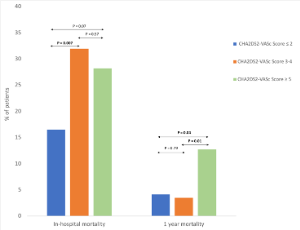
Incorporation of Non-invasive, Contrast-free, and Minimal Radiation Parameters in the Diagnostic Modalities of Coronary Artery Disease
Ibrahim Gul, Naqeeb Ullah Khan, Muhammad Wasim Awan, Naila Nasir Usmani, Mahjabeen Mahmood Kamal
Ischemic heart disease is the major cause of morbidity and mortality. The diagnosis of chronic coronary syndrome is a challenge as most of the diagnostic investigation are either invasive or involve radiation or contrast material. The aim of our study was to find a scoring system comprising diagnostic parameters which are non-invasive and involve minimal radiation or contrast material and yet have high diagnostic yield.
J Clin Cardiol, 2025, Volume Volume 6, Issue Issue 1, p37-47 | DOI: 10.33696/cardiology.6.069
The Value of the Left Atrial Appendage Orifice Perimeter of 3D Model Based on 3D TEE Data in the Choice of Device Size of LAmbre™ Occluder
Dan Jia, Qing Zhou, Hong-Ning Song, Lan Zhang, Sheng Cao, Bo Hu, Jin-ling Chen, Yu Liu, Bin Kong
Preoperative optimal selection of the occluder size is crucial in percutaneous left atrial appendage (LAA) occlusion, and the maximal width of the LAA orifice is the main reference index, however it cannot fully meet the practical operation requirements. We retrospectively analyzed three-dimensional (3D) transesophageal echocardiography (TEE) and computed tomography (CT) imaging dataset of the 41 patients who underwent LAA occlusion with LAmbre™ system.
J Clin Cardiol, 2021, Volume Volume 2, Issue Issue 2, p39-42 | DOI: 10.33696/cardiology.2.015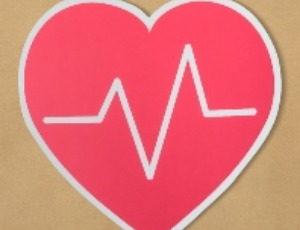
A View on the Contribution of Hedgehog Signalling to Ventricular Septal Development
Christoph Gerhardt
The ventricular septal defect (VSD) is the most frequent congenital heart disease in humans. It is defined as an opening in the septum separating the left and the right ventricle. This gap results in a mixture of oxygenated and deoxygenated blood and in an enhanced blood flow towards the lung and the left ventricle, a condition that leads to severe diseases such as left ventricular hypertrophy as well as pulmonary edema and dilatation.
J Clin Cardiol, 2020, Volume Volume 1, Issue Issue 1, p40-42 | DOI: 10.33696/cardiology.1.005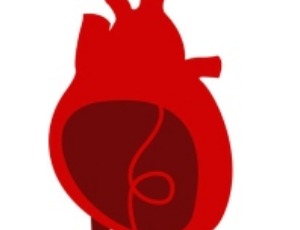
Mitral Valve Culture Negative Endocarditis Complicated by Severe Mitral Regurgitation and Chordae Tendinea Rupture
Alla Adelkhanova, Aleyda San Hernandez, Inti Fernandez Hoyos, Gustavo Espinoza Mercado, Bushra Urooj Ahmed
Infective endocarditis has a high mortality rate. Criterion for diagnosis is a positive blood culture, however, some cases present with negative blood culture. We present a 65-year-old male complaining of palpitations. EKG showed atrial fibrillation with RVR. Transthoracic echocardiogram showed severe mitral regurgitation and possible vegetation. Transesophageal echocardiogram revealed endocarditis with ruptured chordae and vegetation on the posterior leaflet.
J Clin Cardiol, 2024, Volume Volume 5, Issue Issue 1, p40-44 | DOI: 10.33696/cardiology.5.051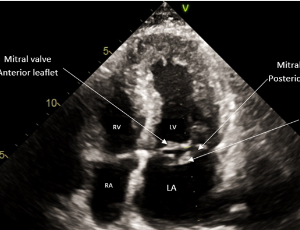
Preparing for a More Public Health-Aware Practice of Medicine in Response to COVID-19
Kari Fitzmorris Brisolara, Dean G. Smith
After one year in a pandemic, we mourn the loss of over half a million lives in the United States, and over four million worldwide, and remain concerned over the challenges facing the families of 35 million people in the United States, and 200 million worldwide, who have suffered from cases of COVID-19.
J Clin Cardiol, 2021, Volume Volume 2, Issue Issue 3, p43-45 | DOI: 10.33696/cardiology.2.016
Estimated Plasma Volume Status (ePVS) for Diastolic Heart Failure in the Intensive Care Unit: A Retrospective Cohort Study
Jun Chen, Qiang Liu
Diastolic heart failure (DHF) is also be regarded as heart failure with preserved ejection fraction (HFpEF), is estimated to occur in 40 to 50% of patients with HF. More than 70% of HF patients over the age of 65 had HFpEF, and the incidence and prevalence of HFpEF has been increased by 10% every 10 years in comparison to HF with reduced ejection fraction (HFrEF), and this gap is expected to widen in the coming years.
J Clin Cardiol, 2022, Volume Volume 3, Issue Issue 2, p43-46 | DOI: 10.33696/cardiology.2.033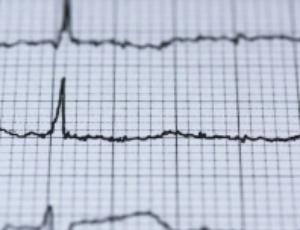
Short-Term Outcomes Following Transcatheter Aortic Valve Implantation: Classical Low-Flow Low-Gradient Versus Normal-Flow Low-Gradient Severe Aortic Stenosis
Benjamin Fogelson, Raj Baljepally, Hassan Tahir, James Livesay, Tyler Coombes, Chirag Patel, Ghassan Wadi, Raymond Dieter III
Background: Both classical severe low-flow low-gradient aortic stenosis (LFLG-AS) and severe normal-flow low-gradient aortic stenosis (NFLG-AS) patients undergo transcatheter aortic valve implantation (TAVI). However, few studies have compared outcomes between the two groups. Our study aimed to assess short term post-TAVI outcomes between classical LFLG-AS and NFLG-AS.
J Clin Cardiol, 2023, Volume Volume 4, Issue Issue 2, p44-51 | DOI: 10.33696/cardiology.4.044
A Case of Purulent Pericarditis in the Setting of Streptococcal Pneumonia
Alla Adelkhanova, Jurgen Shtembari, Alexander Huh
Purulent pericarditis was a prevalent complication of streptococcal pneumonia prior to the antibiotic era. In this article, we report a 68-yearold male presenting with dyspnea, chest pain, left knee pain, diagnosed with S. pneumoniae bacteremia and septic arthritis with isolation of same pathogen from synovial fluid.
J Clin Cardiol, 2024, Volume Volume 5, Issue Issue 2, p45-48 | DOI: 10.33696/cardiology.5.052
Insights of CECCY Trial: Should Troponin be the Target for Anthracycline Cardiotoxicity Prevention?
Edimar Alcides Bocchi, Deborah de Sá Pereira Belfort, Monica Samuel Avila
Advances in oncology such as better access to health care system, earlier cancer diagnosis and new chemotherapies have led to longer survival of oncologic patients over the last decades. However, this population is vulnerable to cardiovascular drug-related adverse events like cardiomyopathy, which leads to heart failure and impairs survival and quality of life.
J Clin Cardiol, 2021, Volume Volume 2, Issue Issue 3, p46-49 | DOI: 10.33696/cardiology.2.017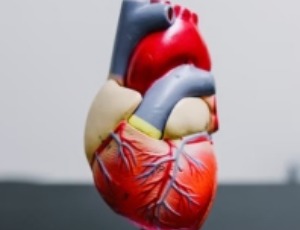
Beta 3-Adrenergic Receptor (β3-AR) Activation at the End of Sustained Ischemia and/or Early Reperfusion may Prove to be a Valuable Cardioprotective Strategy
Ruduwaan Salie, Erna Marais, Amanda Lochner
The contribution of β3-AR activation towards ischemiareperfusion (IR) damage largely depends on the disease stage, severity, experimental model as well as drug specificities which should be considered when investigating β3-AR pharmacology for potential therapeutic applications. These conceptions largely contribute to the discrepancies of the subsequent role of β3-AR activation in the cardiovascular disease process.
J Clin Cardiol, 2022, Volume Volume 3, Issue Issue 2, p47-50 | DOI: 10.33696/cardiology.2.034
Hyponatremia Predicts Adverse Outcomes after Transcatheter Mitral Valve Repair
Olayiwola Olalekan Paul, Emmanuel Daniel, Birgurman Singh, Abdulraheem Eniola Hassan, Busayo Samuel Osineye, Ali Junaid, Allan Santos Argueta, Tioluwani Ojo, Nirmal J. Kaur
Transcatheter mitral valve repairs have been utilized significantly more over the last decade to treat mitral valve regurgitation. Hyponatremia, the most common electrolyte abnormality in hospitalized patients, adversely impacts patient outcomes. However, the impact of hyponatremia on cardiovascular outcomes among TMVR patients remains to be explored.
J Clin Cardiol, 2025, Volume Volume 6, Issue Issue 1, p48-56 | DOI: 10.33696/cardiology.6.070
Metabolic Syndrome and Risk of Early Heart Failure Rehospitalization in Older Adults: A Sex-Specific Analysis and Update
Carolyn B Sue-Ling, Keith Sue-Ling
Metabolic syndrome (MetS) and heart failure (HF) remain important global health issues affecting young and older adults, independently contributing to HF hospitalizations and early rehospitalizations. Understanding sex-specific differences in HF research and accurately identifying risk of rehospitalization in patients with HF remains important for clinical decision making and management. We recently conducted a literature review and retrospective analysis of data specifically focusing on predictors of the 31 to 60-day HF rehospitalization timeframe among older women, as well as derivation of a conceptual model.
J Clin Cardiol, 2024, Volume Volume 5, Issue Issue 2, p49-53 | DOI: 10.33696/cardiology.5.053
Asystole during Tilt Testing-Induced Syncope: A Long-Term Follow-Up
Enrique Velázquez-Rodríguez, María de Jesús Fernández-Muñoz, Marcelo Jiménez-Cruz
The vasovagal (VV) syncope, a variant of neurally mediated reflex syncopal syndromes is a common clinical entity and is one of a heterogeneous group of disorders of orthostatic intolerance that can be identified during an upright tilt table (TT) test. The clinical response to this test is varied, with a majority of the patients exhibiting a mixed response (vasodepressor-cardioinhibitory) and the remainder either a vasodepressor or cardioinhibitory predominant response depending on the relative d
J Clin Cardiol, 2021, Volume Volume 2, Issue Issue 3, p50-57 | DOI: 10.33696/cardiology.2.018
Cardiac Amyloidosis: A Survey of Current Awareness, Diagnostic Modalities, Treatment Practices, and Clinical Challenges Among Cardiologists in Selected Middle Eastern Countries
Dania Mohty, Samer Nasr, Hany Ragy, Hasan Ali Farhan, Bahaa Fadel, Islam Alayary, Marcelle Ghoubar
Cardiac amyloidosis (CA) is a progressive disease affecting the normal cardiac structure and function. CA could be isolated or associated with a spectrum of organ involvement, including the kidneys, lungs, nervous systems, bones, and others.
J Clin Cardiol, 2022, Volume Volume 3, Issue Issue 2, p51-59 | DOI: 10.33696/cardiology.2.035
EASI Monitoring: An Alternative to Conventional Electrocardiography in the Recording of Ventricular Tachycardia
Mauro Buelga Suárez, Lorena Piña Astete, Miguel Cayetano Amores Luque, Jesús García Montalvo, Ana Tur Sainz, Nerea Peñaranda Romero, Patricia Rodríguez Sánchez, María Irene Muñoz Gómez, Gonzalo Luis Alonso Salinas
This study compares the EASI monitoring setting with the conventional 12-lead electrocardiogram (ECG) in patients experiencing ventricular tachycardia (VT) episodes. The results revealed that the EASI monitoring setting demonstrated a VT morphology that closely resembled that of the conventional ECG in the majority of cases. This finding suggests that EASI monitoring could serve as a valuable alternative in situations where obtaining a conventional ECG is either risky or not feasible.
J Clin Cardiol, 2023, Volume Volume 4, Issue Issue 2, p52-57 | DOI: 10.33696/cardiology.4.045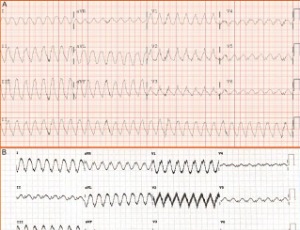
A Case of Ruptured Sinus of Valsalva Aneurysm
Alla Adelkhanova, Bushra Urooj Ahmed, Stephanie Andrea Valencia
Introduction: Sinus of Valsalva aneurysm (SVA) is an abnormal dilation of one or more aortic sinuses located between the aortic valve annulus and the sinotubular junction. SVA rupture can cause shunting into cardiac chambers creating hemodynamic compromise and has a high morbidity and mortality requiring prompt recognition and treatment.
J Clin Cardiol, 2024, Volume Volume 5, Issue Issue 2, p54-58 | DOI: 10.33696/cardiology.5.054
Outcome and Treatment of Atrial Fibrillation in Obesity- Insights from the National Inpatient Sample Database
Allan Santos Argueta, Archit Garg, Birgurman Singh, Olayiwola Olalekan Paul, Ali Junaid, Nirmal J. Kaur
Obesity is considered a significant risk factor for numerous cardiovascular conditions. The prevalence of atrial fibrillation (AF) is elevated among patients with obesity. Weight loss has been shown to reverse cardiac remodelling, leading to lower recurrence of AF despite the better prognosis in obese patients.
J Clin Cardiol, 2025, Volume Volume 6, Issue Issue 1, p57-63 | DOI: 10.33696/cardiology.6.071
Thyroid Hormones in Dilated Cardiomyopathy: Is It a Promising Therapeutic Option?
Hala Mahfouz Badranz
Dilated cardiomyopathy (DCM) is chronic heart muscle disease characterized by progressive ventricular enlargement and contractile dysfunction involving either left or both ventricles. It is considered one of the leading causes of heart failure with reduced ejection fraction (HFrEF) worldwide
J Clin Cardiol, 2021, Volume Volume 2, Issue Issue 3, p58-61 | DOI: 10.33696/cardiology.2.019
COVID Pneumonia, Non-ST Elevation Myocardial Infarction, QRS Fragmentation, and Electrocardiographic Wavy Triple or Yasser's Sign in Hodgkin Lymphoma-Prognostic Influence and Serious Outcome
Yasser Mohammed Hassanain Elsayed
The COVID-19 virus with severe acute respiratory syndrome (SARS) has a remarkable effect on morbidity and mortality. Non-ST elevation myocardial infarction (NSTEMI) is a category of acute coronary syndrome (ACS) that may represent a primary cardiac manifestation of COVID-19 disease. The QRS-complex fragmentation had been considered a hallmark of structural heart disease. Wavy triple, an electrocardiographic sign (Yasser’s sign) is a new specific diagnostic sign and therapeutic guide for hypocalcemia.
J Clin Cardiol, 2023, Volume Volume 4, Issue Issue 2, p58-62 | DOI: 10.33696/cardiology.4.046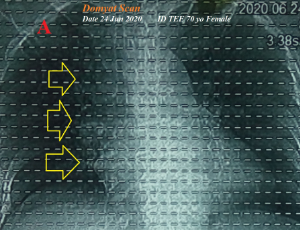
Investigating the Hormetic Role of Resolvin D2 in Atherosclerotic Cardiovascular Disease: Pathways to Biomarker Recognition for Resolvins?
Loukman Omarjee, Charles N. Serhan
Introduction: Resolvin D2 (RvD2), a mediator that helps resolve inflammation, plays a role in stopping the progression of atherosclerotic cardiovascular disease (ASCVD). Understanding how RvD2 levels relate to ASCVD risk could reveal its potential as both a treatment target and a biomarker. Methods: We examined the research by Liu et al., which used an analytical method that combined restricted cubic splines with multivariable Cox proportional hazard models.
J Clin Cardiol, 2024, Volume Volume 5, Issue Issue 2, p59-64 | DOI: 10.33696/cardiology.5.055
Effects of Anastomotic Angles and Distances of the Bypass Graft to the Stenosis on Blood Flow Hydrodynamics in a Bypass Grafting Coronary Artery
Amir Hossain Golshirazi, Vahid Javanbakht
It is believed that the proper distance between the grafting location and the stenosis location and the appropriate angle of graft or transplantation in the blocked artery of the heart are two important factors in the removal or decrease of reappearance and re-development of intimal hyperplasia (IH), blood clotting, and re-blockage of the surgical artery. In the present study, a 3-D geometry of the host coronary artery as non-elastic with 75% symmetric axial cross-sectional area reduction is considered.
J Clin Cardiol, 2022, Volume Volume 3, Issue Issue 2, p60-70 | DOI: 10.33696/cardiology.2.036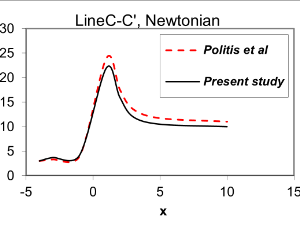
Bromodomain and Extra-Terminal Family Protein Inhibitors: A Potentially New Therapy for Heart Disease
Jing Mu, Ming-Hui Zou
Bromodomain-containing protein 4 (BRD4) is a member of the mammalian bromo- and extra-terminal domain (BET) protein family, which also comprises BRD2, BRD3, and testis-specific BRDt.
J Clin Cardiol, 2021, Volume Volume 2, Issue Issue 3, p62-68 | DOI: 10.33696/cardiology.2.020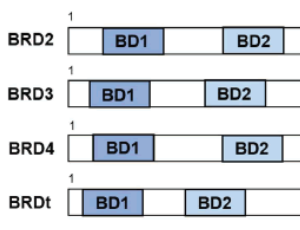
Redefining the Role of Revascularization in Atherosclerotic Renal Artery Stenosis: A Case Report Demonstrating Transformative Clinical and Renal Outcomes
Zakiyyatul Aflakha, Muhammad Rifqi Arya Putra, Yusuf Azmi, Wynne Widiarti, Johanes Nugroho Eko Putranto, Raden Mohammad Budiarto, Nadya Luthfah, Rendra Mahardhika Putra
Renal artery stenosis (RAS), primarily caused by atherosclerosis, leads to resistant hypertension, progressive renal dysfunction, and cardiovascular complications. Treatment options include medical therapy and revascularization, with the latter offering significant benefits in selected cases. This report details a successful staged revascularization approach, demonstrating notable clinical improvements in a patient with bilateral RAS.
J Clin Cardiol, 2025, Volume Volume 6, Issue Issue 1, p64-69 | DOI: 10.33696/cardiology.6.072
Troponin: Think Before Testing
Shakirat Ganiyu, Fatimah Bello, Danielle Stone, Gregory Ruhnke, James Stone
This is a high-value care-based quality improvement project that was carried out to decrease inappropriate troponin testing in the emergency department (ED) of a tertiary health institution in the United States with the goal of promoting evidence-based practices, minimizing waste, and enhancing the quality of care.
J Clin Cardiol, 2024, Volume Volume 5, Issue Issue 2, p65-72 | DOI: 10.33696/cardiology.5.056
Diagnostic Value of Lung Ultrasonography in Comparison with Killip Classes after Angiography in Acute Myocardial Infarction: A Study from Iran
Homa Hemmati, Ramin Khameneh Bagheri, Hedieh Alimi, Hassan Mehrad-Majd
Acute myocardial infarction (AMI) with heart failure (HF), is the main cause of increased mortality. Early risk stratification by Killip classification is essential for its management. Today, non-invasive diagnostic methods such as lung ultrasound (LUS) are on the rise due to their ability to provide valuable insights without invasive methods. In this study we aimed to evaluate diagnostic value of LUS in comparison with Killip classes after angiography in AMI patients.
J Clin Cardiol, 2025, Volume Volume 6, Issue Issue 1, p70-75 | DOI: 10.33696/cardiology.6.073
External Validation of Four Cardiovascular Risk Prediction Models
Alauddin Bhuiyan, Arun Govindaiah, R Theodore Smith
Background and Purpose: Cardiovascular disease (CVD) is a leading cause of death and disability in the world. Many CVD risk prediction models have been created, but those most widely used in clinical settings have not been externally validated, a significant gap addressed herein. Methods: Using the Multi-Ethnic Study of Atherosclerosis (MESA), we have externally validated the Framingham Risk Score, ASSIGN (Assessing the cardiovascular disease risk using SIGN) risk score, Atherosclerotic Cardiovascular Disease (ASCVD) risk score, and the European SCORE model, which were selected based on popularity among clinicians and frequency of clinical use.
J Clin Cardiol, 2024, Volume Volume 5, Issue Issue 2, p73-80 | DOI: 10.33696/cardiology.5.057
- Abstract |
- Full Text |
- Cite |
- Supplementary File
Commentary on: Peptidylglycine alpha-amidating Monooxygenase is Required for Atrial Secretory Granule Formation
Emil Daniel Bartels, Jens Peter Gøtze, Richard E. Mains, Betty A. Eipper
The electron-dense spherical granules found in the perinuclear region of atrial myocytes store and release both proatrial and probrain natriuretic peptides (proANP and proBNP, respectively). Mature ANP and BNP produce vasodilation and natriuresis and inhibit the renin-angiotensin and sympathetic nervous systems.
J Clin Cardiol, 2021, Volume Volume 2, Issue Issue 4, p75-80 | DOI: 10.33696/cardiology.2.022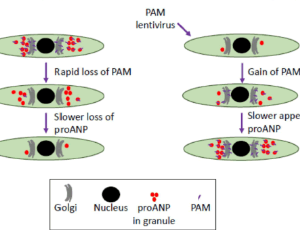
Ticagrelor-Associated Central Sleep Apnea: A Case Report and Review of the Literature
Danny Sameh Darwich, Sagger Mawri
Ticagrelor is an oral, third-generation reversible P2Y12 receptor antagonist used in the treatment of patients with atherosclerotic cardiovascular disease. Dyspnea is a well-recognized side effect of ticagrelor, typically occurring within hours to days after initiation. In most cases, the dyspnea is mild and resolves spontaneously without intervention. However, dyspnea can be significant and intolerable in some patients necessitating discontinuation of ticagrelor.
J Clin Cardiol, 2025, Volume Volume 6, Issue Issue 2, p76-83 | DOI: 10.33696/cardiology.6.074
The Night Sweats and Pulmonary Embolism-controversial Presentation and Differentiation
Azka Naeem, Vahagn Tamazyan, Muhammad Hashim Khan, Vijay Shetty
Pulmonary embolism (PE) is a common and potentially fatal condition where early and accurate diagnosis can significantly reduce mortality and morbidity. It typically presents with a range of associated symptoms such as breathlessness at rest or during exertion, coughing, discomfort or swelling in the legs, and wheezing. However, many atypical symptoms are also possible, including epigastric pain, hypotension, and night sweats, with mechanisms not yet understood.
J Clin Cardiol, 2024, Volume Volume 5, Issue Issue 2, p81-84 | DOI: 10.33696/cardiology.5.058
Sonoreperfusion Therapy for Microvascular Obstruction: A Review
Filip Istvanic, Gary Yu, Xucai Chen, John Pacella
Coronary artery disease and acute myocardial infarction are a leading cause of morbidity and mortality. Contemporary therapy is percutaneous coronary intervention (PCI), performed by balloon angioplasty and stent placement.
J Clin Cardiol, 2021, Volume Volume 2, Issue Issue 4, p81-87 | DOI: 10.33696/cardiology.2.023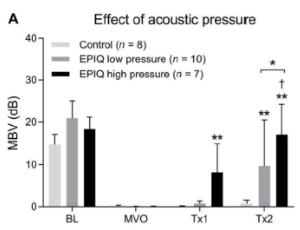
CT Coronary Angiography Vs Cardiac Catheterization and Risk of Acute Kidney Injury – Comparative Study
Swatam Jain, Farzad Majidi
CT coronary angiography (CTCA) and invasive coronary angiography (ICA) are widely used to evaluate coronary artery disease (CAD). Both involve iodinated contrast, which may cause contrast-induced acute kidney injury (CI-AKI), particularly in high-risk patients. This study compared the incidence of AKI following CTCA versus ICA in hospitalized patients with symptomatic CAD.
J Clin Cardiol, 2025, Volume Volume 6, Issue Issue 2, p84-90 | DOI: 10.33696/cardiology.6.075
- Abstract |
- Full Text |
- Cite |
- Supplementary File
Ethical Pearls in Fetal and Neonatal Cardiology
Hala Al Alem
Working in health care institutions- deal with fetal/pediatric congenital heart diseases-build up moral sensitivity at different levels. Patient-family and doctor relationship starts from the moment family decides to seek medical/surgical advice. Parents ask everywhere to choose the best compassionate expert who could help at all levels. Mutual respect and trust are the first ethical values to launch the medical/surgical journey.
J Clin Cardiol, 2024, Volume Volume 5, Issue Issue 2, p85-87 | DOI: 10.33696/cardiology.5.059
The Role of Cerebral Embolic Protection in Transcatheter Aortic Valve Replacement
Jonathan Halim, JM Cheng, P den Heijer, BE Schölzel, J Vos, M Meuwissen, B van den Branden, M van Gameren, N van Royen, AJJ Ijsselmuiden
In transcatheter aortic valve replacement (TAVR), stroke remains one of the most devastating complications. The goal of this review is to provide an overview of all currently available CEPD and to discuss the results of the most relevant studies concerning cerebral embolic protection in TAVR.
J Clin Cardiol, 2021, Volume Volume 2, Issue Issue 4, p88-95 | DOI: 10.33696/cardiology.2.024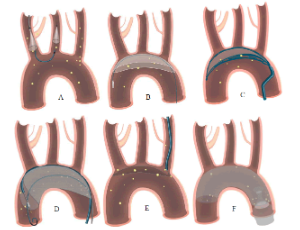
Coronary CT Angiography and Assessment of Coronary In-Stent Restenosis—A Brief Report of Stent-Related Factors among Positive Angiographic Cases
Ramin Khameneh Bagheri, Mahdi Radfar, Hassan Mehrad-Majd, Ali Heydari Bakavoli
In-stent restenosis (ISR) remains a significant concern in coronary artery disease management. This study aims to evaluate the efficacy of coronary computed tomography angiography (CCTA) in detecting ISR and to identify stent-related factors in a real-world patient population.
J Clin Cardiol, 2025, Volume Volume 6, Issue Issue 2, p91-96 | DOI: 10.33696/cardiology.6.076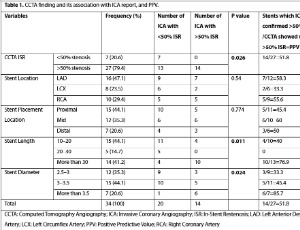
Coronary Revascularization in the Era of Transcatheter Aortic Valve Replacement: Treat the Patient, Manage the Disease
Pradyumna E Tummala, Cindy L Grines
Coronary artery disease continues to be the greatest cause of global mortality. The prevalence of coronary artery disease in patients with severe aortic stenosis varies widely, from 80% in extreme high-risk trials to only 15% in more recent low risk trials.
J Clin Cardiol, 2021, Volume Volume 2, Issue Issue 4, p96-99 | DOI: 10.33696/cardiology.2.025
In-hospital Mortality Trends Across the Pre-pandemic, Pandemic, and Post-pandemic Eras in Cardiovascular and Cerebrovascular Conditions: A Retrospective Cohort Study
Swatam Jain, Pinak Shah, Alfred Danielian, Boone Singtong, Christopher Aboujaoude, Zade Zahlan, Rakahn Haddadin, Kush Kapadia
The COVID-19 pandemic strained healthcare delivery, but its lasting impact on acute and chronic cardiovascular and cerebrovascular mortality remains unclear. We compared in-hospital mortality for ST-elevation myocardial infarction (STEMI), non-ST-elevation myocardial infarction (NSTEMI), ischemic stroke, and congestive heart failure (CHF) across pre-pandemic, pandemic, and post-pandemic eras.
J Clin Cardiol, 2025, Volume Volume 6, Issue Issue 2, p97-102 | DOI: 10.33696/cardiology.6.077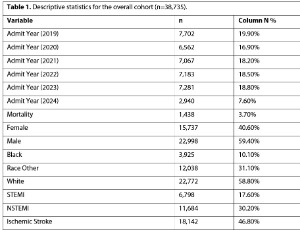
- Abstract |
- Full Text |
- Cite |
- Supplementary File
Post-coronary Angiography Stroke in a High-risk Patient: A Case Report
Jamal A. Allam, Rayan Abou Zeid
Stroke, although uncommon, is a serious complication that can occur during cardiac catheterization. It is often caused by emboli, typically from plaques or thrombi dislodged during the procedure. Certain patients, particularly those who are older or have underlying conditions like diabetes and coronary artery disease, may face a higher risk. This case report aims to illustrate post-coronary angiography stroke and highlight the need for swift diagnosis and treatment.
J Clin Cardiol, 2024, Volume Volume 5, Issue Issue 2, p98-102 | DOI: 10.33696/cardiology.5.062
A Simple Tool to Predict Transradial Access Failure for Coronary Angiography
Benjamin Fogelson, Hassan Tahir, James Livesay, Raj Baljepally, Usman Sarwar
Based on multiple large clinical trials, the transradial access (TRA) approach has been widely accepted as the preferred method of vascular access for coronary angiography and percutaneous coronary intervention. However, it is not without its limitations and complications.
J Clin Cardiol, 2021, Volume Volume 2, Issue Issue 4, p100-101 | DOI: 10.33696/cardiology.2.026
Commentary on Management of Respiratory Problems in Pediatric Cardiac Patients
Tamer A Abusido
Asthma, as a comorbidity in the presence of cardiac disorder, can be a very annoying issue. In contrast to the patient's cardiac disease, it might not feel like a major problem, especially when considering some cyanotic heart conditions, but in reality, having a daily cough can be very concerning for families, affecting their kid’s quality of life, sleep, and daily activity.
J Clin Cardiol, 2024, Volume Volume 5, Issue Issue 2, p103-108 | DOI: 10.33696/cardiology.5.061
Utilization of Prognostic Protein Tests in the Investigation of Suspected Chronic Coronary Artery Disease
Stephen A Williams, Jessica Chadwick, David Astling, Michael Hinterberg, Rachel Ostroff, Klara Rumora, Medina Durmo, Joan E Walter, Christian Mueller
Guidelines-driven diagnostic investigations for suspicion of functionally relevant coronary artery disease (fCAD) are complex and expensive. Therefore, we evaluated whether a previously validated proteomic residual cardiovascular risk (RCVR) model could complement existing fCAD detection strategies by accurately identifying patients at high risk for an event and safely ruling out fCAD in low-risk patients.
J Clin Cardiol, 2025, Volume Volume 6, Issue Issue 2, p103-113 | DOI: 10.33696/cardiology.6.078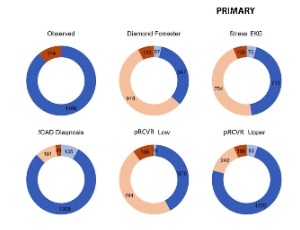
- Abstract |
- Full Text |
- Cite |
- Supplementary File
Echocardiographic Evaluation of Left Ventricular Function Six Weeks Post-Primary Percutaneous Coronary Intervention: A Prospective Study
Reza Khademi, Mohammadsadegh Jafari, Mohammad Rahmanian, Maryam Taherkhani
This study aimed to determine if two-dimensional (2D) speckle tracking of left ventricular ejection fraction (LVEF) could predict six-week remodeling in patients after primary percutaneous coronary intervention (PPCI) for acute ST-segment elevation myocardial infarction (STEMI).
J Clin Cardiol, 2024, Volume Volume 5, Issue Issue 2, p109-115 | DOI: 10.33696/cardiology.5.063
Recurrent Prosthetic Valve Endocarditis Causing Pseudoaneurysm of the Mitral-aortic Intervalvular Fibrosa
Kenney Abraham, Matthew Pelletier, Ryan Heslin
Infective endocarditis (IE) refers to inflammation of the endocardium, which is the inner layer of the heart. One of the most significant risk factors for developing IE is bioprosthetic valves within the heart. IE can lead to formation of vegetations on the surfaces of heart valves, making treatment difficult with antibiotics alone, often requiring surgery.
J Clin Cardiol, 2025, Volume Volume 6, Issue Issue 2, p114-118 | DOI: 10.33696/cardiology.6.079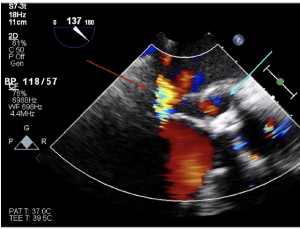
Optimizing Stroke Prevention after AtriClip Left Atrial Appendage Occlusion: A Narrative Review of Anticoagulation Dilemmas and Imaging Needs
Swatam Jain, Alfred Danielian, Pinak Shah, Roxanne Moghadam
Atrial fibrillation (AF) is a major risk factor for ischemic stroke, with the left atrial appendage (LAA) being the predominant source of thrombi. Surgical LAA occlusion (LAAO) with devices like the AtriClip offers a mechanical alternative to long-term oral anticoagulation (OAC), particularly for patients at high bleeding risk or with OAC contraindications.
J Clin Cardiol, 2025, Volume Volume 6, Issue Issue 2, p119-124 | DOI: 10.33696/cardiology.6.080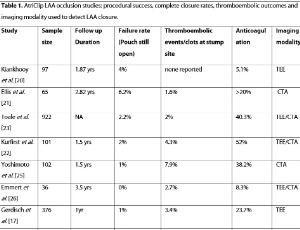
- Abstract |
- Full Text |
- Cite |
- Supplementary File
Allopurinol for Prevention of Contrast-Induced Acute Kidney Injury in Patients Undergoing Percutaneous Coronary Intervention: A Randomized-Controlled Trial
Kareem Mahmoud, Wadhah Hasan, Hesham Taha, Dalia ElRemisy
Contrast-induced acute kidney injury (CI-AKI) is a potential complication following percutaneous coronary intervention (PCI), particularly in patients with pre-existing kidney conditions. Previous research has identified hyperuricemia as a predictor for CI-AKI. Allopurinol, a medication commonly used to manage hyperuricemia, also possesses anti-inflammatory properties. This study aims to assess the impact of adding allopurinol to hydration therapy on CI-AKI incidence in patients undergoing PCI.
J Clin Cardiol, 2025, Volume Volume 6, Issue Issue 2, p133-141 | DOI: 10.33696/cardiology.6.082
Association of Vitamin D Serum Levels with Clinical Outcomes in Patients with Acute Decompensated Heart Failure
Seyedeh Fatemeh Mirrazeghi, Parsa Monajemi, Soheil Hassanipour, Yasaman Borghei, Samira Arami
Heart failure (HF) stands out as a major reason for hospital admissions. Vitamin D deficiency is also associated with a higher risk of cardiovascular diseases. Due to recent conflicting findings, this study aimed to investigate clinical outcomes based on serum vitamin D levels in hospitalized patients with HF.
J Clin Cardiol, 2025, Volume Volume 6, Issue Issue 2, p142-147 | DOI: 10.33696/cardiology.6.083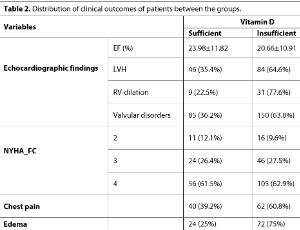
About Scientific Archives
Scientific Archives is a global publisher initiated with the mission of ensuring equal opportunity for accessing science to research community all over the world. Spreading research findings with great relevance to all channels without any barrier is our goal. We want to overcome the challenges of Open Access with ensured quality and transparency.
